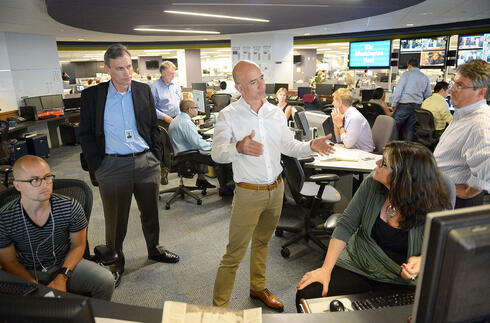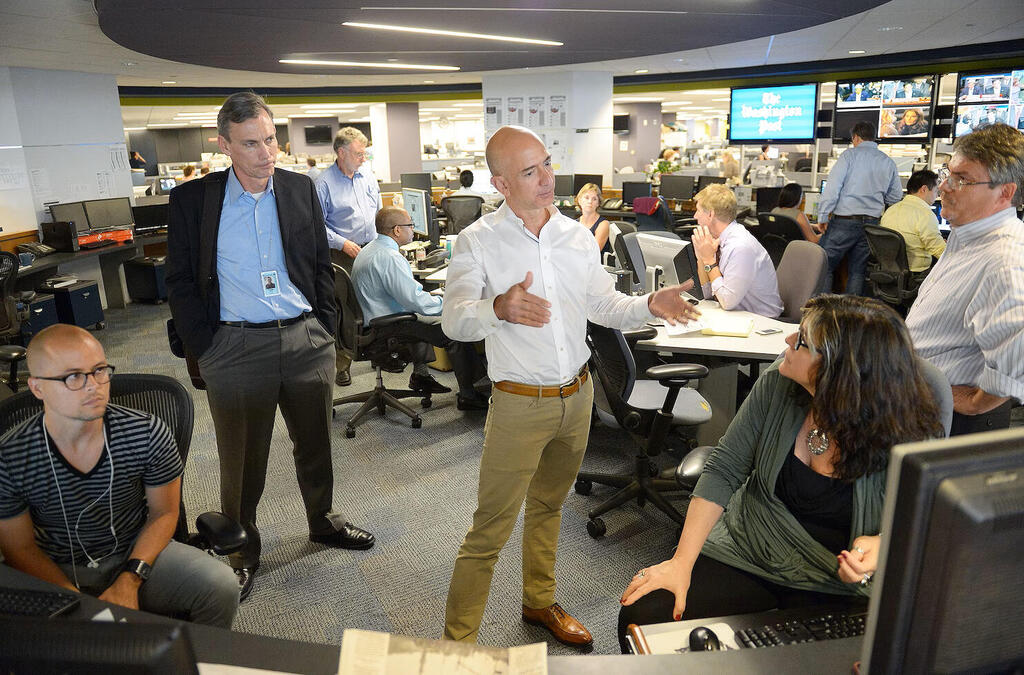
Are your work meetings worth it? Shopify thinks not
The e-commerce giant is tackling inefficiency by revealing the true price of workplace meetings
Imagine that every time you scheduled a work meeting a small red tag appeared with the price of that meeting. How much would it cost you to hold that specific meeting with the participants you invited? What would seem like a reasonable price and how many meetings would you cancel if you knew their true cost? Shopify has decided to combat exactly this phenomenon, which has become a global concern - unnecessary meetings at work.
If the company's employees try to schedule a meeting with three or more people, a small red price tag pops up estimating the cost of the meeting based on its size, duration, and the average salary of the participants. The cost for a 30-minute meeting for one person can range from $700 to $1,600, depending on the role and experience. When managers join the meeting, the cost may increase accordingly.
According to a report by Microsoft published in May this year, the number one factor disrupting work efficiency is meetings. Since February 2020, the time people spend in online meetings has tripled. Moreover, employees feel the need to attend all the meetings they are invited to, even though 43% of them could be canceled without any consequences, according to their own judgment.
It's not certain whether Shopify's "price tag" will reduce the number of unnecessary meetings, but it might reveal the salaries of some of the company's employees and even the disparities between managers' and workers' wages. Furthermore, the effectiveness of meetings is not solely dependent on their length or the number of participants. During the COVID-19 pandemic, when meetings shifted to video conferencing, one of the challenges companies complained about was the difficulty of generating effective brainstorming and concerns that this difficulty might impact innovation. Meetings can be effective even if they involve four, eight, or even more participants and even if they last more than half an hour.
Shopify is not the first to try to combat the phenomenon of unnecessary meetings. The COVID-19 period brought this issue back into awareness due to changes in work routines and the proliferation of remote work, leading to an increase in video meetings. In December 2021, Salesforce announced a "week without meetings" in an attempt to combat "Zoom fatigue" and the exhaustion caused by the need to be available all day and participate in numerous meetings. As a result of the experiment, 93% of the employees reported at least one positive aspect of a week without meetings, 61% said they worked the same number of hours, 20% said they worked fewer hours, and about half of the people said they learned how to work asynchronously better.
In parallel with Salesforce's experiment, Citigroup, the global bank, decided to make changes to work meetings. For example, they decided to shorten meetings to 50 minutes to give employees a ten-minute break between meetings. They also implemented mindfulness moments during the meetings.
Remitly Israel conducted a recent survey following a pilot of a day without meetings. 97% of the participants requested to continue with the practice because it made their work week more efficient. “The pilot aimed to examine the effectiveness of a day without meetings and whether it could be implemented organization-wide, as the organization has thousands of global employees. The goal was to improve organizational satisfaction, reduce unnecessary workload on employees, and increase efficiency. They created a day dedicated solely to ongoing tasks and producing results. The feedback was excellent, as reducing the number of meetings led to more creative and efficient communication. People began to handle more things through emails and Slack or had short one-on-one syncs instead of long, multi-participant meetings, which saved valuable time while still obtaining all the necessary information,” said Shenhav Yehuda, Director of Marketing at Remitly.
The trend of reducing unnecessary meetings at work did not start with the COVID-19 pandemic. Jeff Bezos, the founder of Amazon, implemented the "Two-Pizza Rule" long before 2020 to maintain efficiency in work meetings. The logic behind this "rule" is to limit the number of participants in a meeting. Bezos also stated that he starts each meeting with silence to streamline the work, allowing people to read the meeting preparation materials. Before the discussions begin, Bezos and his senior management team sit quietly and read the meeting memos that were prepared for the meeting. These memos can be spread across six pages, so the required silence to read them might take up to half an hour. During this time, participants are expected to jot down notes on what they read and, most importantly, learn and digest the information.
Considering the way Twitter was managed, it's not certain whether implementing Elon Musk's management advice is advisable, but he also addressed the issue long before the COVID-19 outbreak. In 2018, Musk described the way managers at his company handle work meetings based on three guiding principles: (1) reduce the number of participants in meetings, (2) if you're not adding value to the meeting, leave it, and (3) avoid too frequent meetings.
For Musk, the highest number of participants is six, and he requested that those meetings that do take place be very short. In a provocative statement at the time, Musk encouraged employees who felt they were not contributing to a meeting to stand up and leave.
Both Bezos and Musk were proactive in their approaches to reducing unnecessary meetings, focusing on efficiency and making sure meetings add value to the work process. These principles were in place long before the pandemic highlighted the importance of effective meetings and their impact on productivity.
Work meetings are a great way to foster creativity and innovation, resolve issues quickly, and streamline teamwork and collaboration. However, sometimes they can also become a way to show employees are working when they are not truly productive, or they can waste time that doesn't contribute to advancing the work. When this happens, and employees are invited to meetings that don't yield anything meaningful, don't lead to tasks or decisions, or are not focused and drag on unnecessarily, they rightly feel that the workload is increasing while their motivation is decreasing. A study conducted at Harvard found that employees believe 83% of the meetings on their calendars are not effective.
So, how can you conduct efficient work meetings without resorting to extreme measures like Shopify did? The first step is to question whether the meeting is necessary, as Shopify tries to do by presenting the cost in dollars. Ask about the meeting's objectives, who are the necessary participants to achieve those objectives, and whether the goals can be achieved through email, messages, podcasts, or videos.
In a McKinsey article on the subject, it is recommended to conduct a deeper investigation and ask whether the organization encourages setting up meetings over individual decision-making. In cases where people don't make decisions independently, leaders need to scrutinize every meeting invitation and not accept them all to promote independent decision-making in at least some cases.
Once you have decided a meeting is needed, ask who the essential participants are. Employees invited to meetings should also ask themselves if they are necessary for the meeting and how they can contribute to it. If you are invited to a meeting where you don't believe you can contribute, raise the concern with the meeting organizer. It is very likely you are correct in your assessment.
For a meeting to be effective, it needs to have defined objectives and goals that you want to achieve, such as tasks, information, or decisions. Once you have defined the meeting's objectives, it's important to ensure that they are achieved during the meeting. To accomplish this, you can distribute reading materials in advance so that everyone comes prepared, specify the objectives, and coordinate expectations. You can also appoint a meeting facilitator whose role is to ensure that materials are sent out, disseminate the objectives and goals, confirm the essential presence of all participants, and ultimately send out a summary.
Time should be defined and limited. When meetings are dragged out, they are not effective and cause people to waste valuable time when they could be doing 'real work.' Therefore, every meeting should have a set time frame and disperse once the time is up. McKinsey distinguishes between three types of meetings: decision-making meetings, problem-solving and synchronization meetings, and the third type is informative meetings. If it's an informative meeting, the recommendation is to limit it to no more than 30 minutes. Decision-making meetings may be slightly longer but should end with a decision being made.















